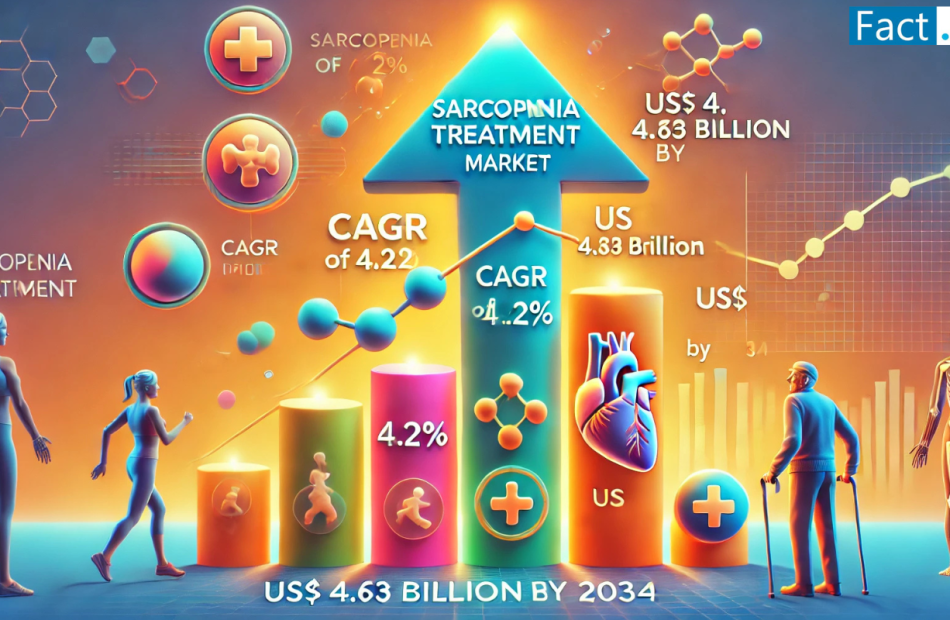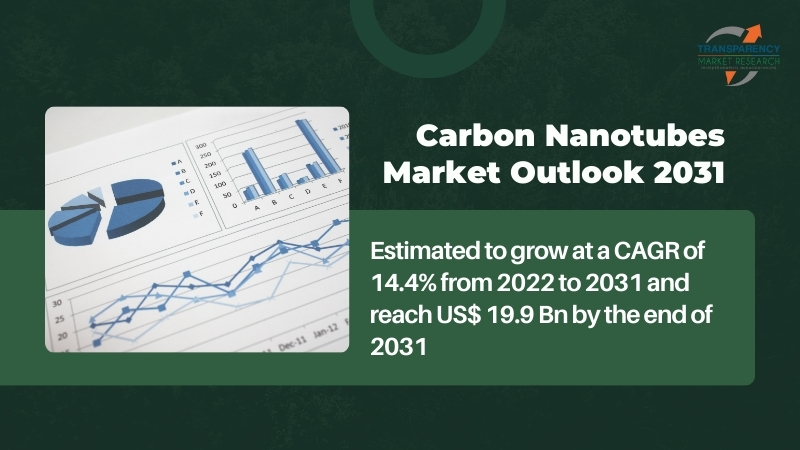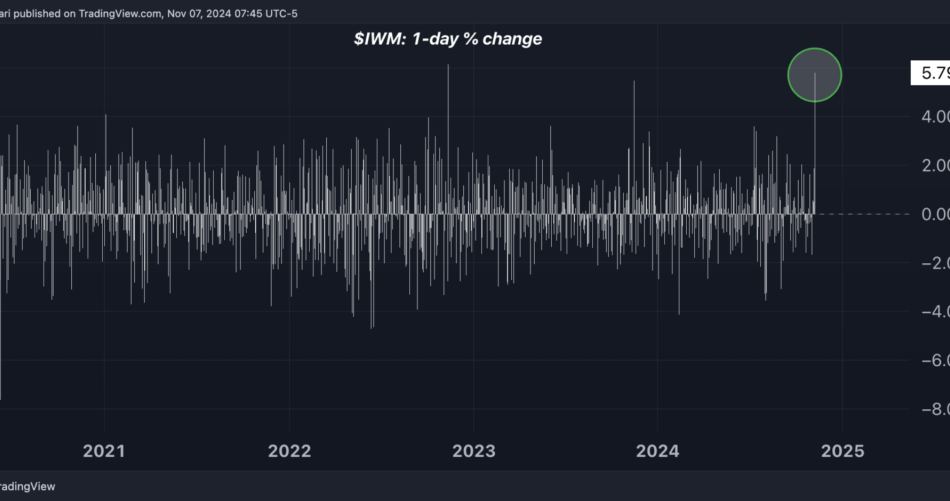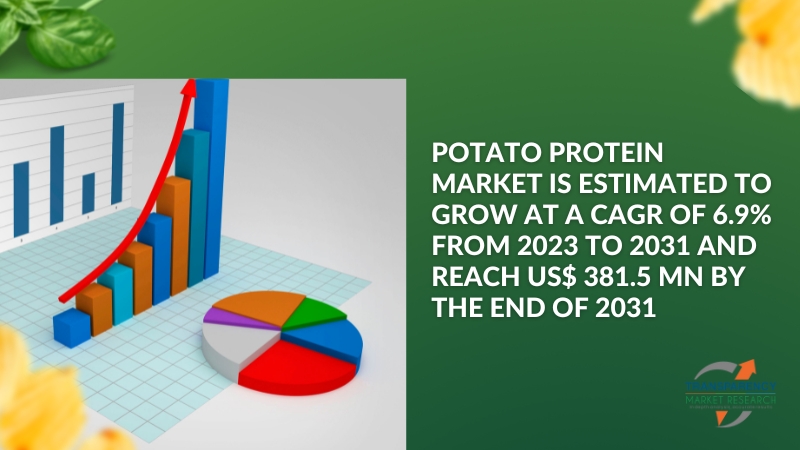Sarcopenia Treatment Market to Experience 4.2% CAGR, Reaching US$ 4.63 Billion by 2034 | Fact.MR Report
Rockville, MD, Nov. 07, 2024 (GLOBE NEWSWIRE) — The world population has crossed 8 billion, with a significant number of elderly people suffering from sarcopenia. As per a new study by Fact.MR, the global sarcopenia treatment market is estimated at US$ 3.07 billion in 2024 and is projected to expand at a CAGR of 4.2% from 2024 to 2034.
The market is progressing as younger individuals increasingly recognize the signs of such conditions and pursue treatment. Treatment options include dietary and exercise therapies, often recommended by rheumatologists based on age and immune system. All of these factors are driving market growth as patients increasingly rely on these therapies.
Myostatin, vitamin D, angiotensin, and omega-3 supplements are favored by consumers for their ability to enhance strength recovery with minimal side effects, thus increasing demand for treatments. Rising personal healthcare expenses are projected to drive demand for sarcopenia treatment supplements.
- According to the National Health Expenditure Accounts (NHEA), healthcare spending in the United States grew by 4.3% in 2016, reaching US$ 3.3 trillion, or US$ 10,348 per person.
For More Insights into the Market, Request a Sample of this Report: https://www.factmr.com/connectus/sample?flag=S&rep_id=10051
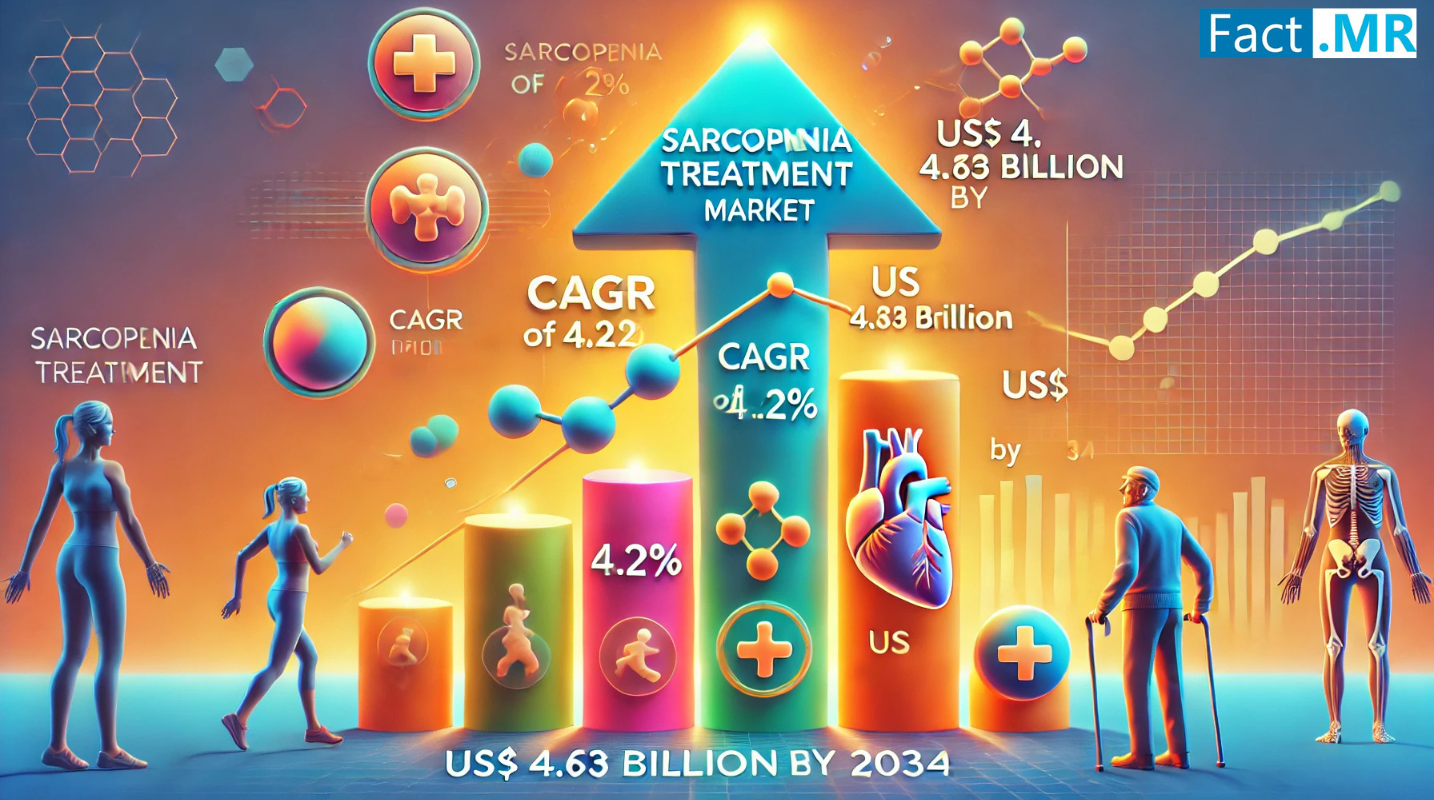
Key Takeaways from Market Study
- The global sarcopenia market is projected to reach US$ 4.63 billion by the end of 2034.
- The North American market is forecasted to expand at a 6% CAGR through 2034.
- In 2024, protein supplements are estimated to account for 5% of the market share.
- By 2034, Latin America is projected to hold 7% of the global market share.
- The market in Brazil is forecasted to expand at a CAGR of 1% from 2024 and 2034.
“Increasing prevalence of sarcopenia is necessitating early diagnosis and effective treatments. The susceptibility of the expanding aging population to sarcopenia is also driving market expansion,” says a Fact.MR analyst.
Leading Players Driving Innovation in the Sarcopenia Treatment Market:
Key industry participants like Bayer AG, Haleon Group of Companies, Zydus Life Sciences Limited, Eli Lilly and Company, Novartis AG, Abbott Laboratories Inc., GlaxoSmithKline Plc, F-Hoffmann La-Rache, Sanofi Inc., Amway Corporation. etc. are driving the sarcopenia treatment industry.
Association of Sarcopenia with Chronic Conditions
Sarcopenia is often associated with chronic conditions like diabetes, cancer, and cardiovascular disease. The rising occurrence of sarcopenia due to the increasing prevalence of these ailments boosts the demand for treatments. This surge in cases has driven consumers to seek treatment, thereby driving market growth.
Sarcopenia is now being diagnosed earlier as awareness of the condition grows among both the public and healthcare professionals. As awareness increases, there is a greater demand for improved treatments and therapies. These factors have spurred manufacturers in the country to expand their operations to seize market opportunities.
Sarcopenia Treatment Industry News:
- In October 2023, Metagenics LLC acquired 100% of Amipro Advanced Development Products, which had been the exclusive distributor of Metagenics’ products in South Africa for many years. This acquisition strengthens Metagenics’ distribution network, enabling direct distribution operations across key EMEA markets.
- Additionally, in September 2023, Biophytis received authorization from the United States Food and Drug Administration (FDA) to initiate its SARA-31 research in the U.S., marking the first phase 3 trial in the sarcopenia therapy sector.
Get Customization on this Report for Specific Research Solutions:
https://www.factmr.com/connectus/sample?flag=S&rep_id=10051
More Valuable Insights on Offer
Fact.MR, in its new offering, presents an unbiased analysis of the sarcopenia treatment market for 2018 to 2023 and forecast statistics for 2024 to 2034.
The study divulges essential insights into the market based on product type (protein supplements, vitamin B12 supplements, vitamin D & calcium supplements) and distribution channel (hospital pharmacies, retail pharmacies, online pharmacies, hypermarkets & supermarkets), across six major regions of the world (North America, Latin America, Europe, East Asia, South Asia & Oceania, and MEA).
Check out More Related Studies Published by Fact.MR Research:
Muscle stimulators market is expected to reach US$ 1.85 billion by 2032, growing at a CAGR of 5.4%.
Patient blood management market in 2022 is valued at US$ 12.7 billion and is estimated to reach a sales revenue of US$ 18.4 billion by the end of 2027.
Women’s health rehabilitation products market is predicted to increase from its current valuation of US$ 3.22 billion and reach US$ 5.77 billion by the end of 2033.
Bone biopsy systems market is set to enjoy a valuation of US$ 227.6 million in 2022 and expand at a CAGR of 6% to reach US$ 408.9 million by the end of 2032.
Veterinary endoscopy market is currently valued at US$ 184 million. Global sales of veterinary endoscopy machines are expected to rise at a CAGR of 5.5% from 2022 to 2027 and will reach US$ 240.4 million by 2027.
About Us:
Fact.MR is a distinguished market research company renowned for its comprehensive market reports and invaluable business insights. As a prominent player in business intelligence, we deliver deep analysis, uncovering market trends, growth paths, and competitive landscapes. Renowned for its commitment to accuracy and reliability, we empower businesses with crucial data and strategic recommendations, facilitating informed decision-making and enhancing market positioning. With its unwavering dedication to providing reliable market intelligence, FACT.MR continues to assist companies in navigating dynamic market challenges with confidence and achieving long-term success. With a global presence and a team of experienced analysts, FACT.MR ensures its clients receive actionable insights to capitalize on emerging opportunities and stay ahead in the competitive landscape.
Contact:
US Sales Office:
11140 Rockville Pike
Suite 400
Rockville, MD 20852
United States
Tel: +1 (628) 251-1583
Sales Team : sales@factmr.com
Follow Us: LinkedIn | Twitter | Blog

© 2024 Benzinga.com. Benzinga does not provide investment advice. All rights reserved.
MEI: Increased government intervention during the Quiet Revolution was not responsible for rising living standards in Quebec
MONTREAL, Nov. 07, 2024 (GLOBE NEWSWIRE) — The expansion of the Quebec government during the Quiet Revolution had no significant impact on the living standards of Quebecers, shows a new MEI publication based on economic modelling.
“The idea that the growth of the government allowed Quebecers to get richer in the 1960s has a particularly strong hold on our collective psyche,” says Vincent Geloso, senior economist at the MEI and co-author of the study. “However, by putting it to the test, we find that while the Quebec population did indeed get richer during this period, it wasn’t due to the expansion of government.”
Between 1960 and 1975, the wealth gap between Quebec and Ontario shrank by between 6.8 and 9.7 percentage points.
In order to test the effects of the growth of the Quebec government during this period, the researchers used a method known as “synthetic controls,” grouping together a mix of different indicators for five Canadian provinces.
The indicators selected were real GDP per worker, real GDP per capita, size-adjusted household income, real hourly wages, life expectancy at birth, school enrollment rate, average years of total schooling, and size of government.
The researchers tested the validity of this control by comparing the performance of this synthetic Quebec to that actually observed in Quebec, for a period of 15 years before the Quiet Revolution. The variations of the different components of the model corresponded to those observed in Quebec during the same period.
“Basically, what this method allows us to do is observe how Quebec would have evolved without the Quiet Revolution, and compare it to what actually happened in order to isolate causes,” explains Mr. Geloso.
By observing the difference between the performance of the synthetic model and the performance actually observed in Quebec between 1960 and 1975, the researchers were able to measure the effects that were attributable to the Quiet Revolution.
The results show that the expansion of government in this period did not have a statistically significant effect on real GDP per capita, household income, or hourly wages for Quebecers.
The only measurable positive effects were a 40-day increase in life expectancy and an increase of 0.91 years of schooling. This latter effect was entirely attributable to a modification of the Education Act, extending by a year the minimum age for leaving school in the early 1960s.
The most notable impact is the increase in the size of the government, which by 1975 was taking up 4.7 percentage points more space in the Quebec economy than it otherwise would have.
“Other than the increase in the size of the government, it does not seem that the Quiet Revolution had very large effects on the well-being of Quebecers,” notes Mr. Geloso. “While Quebec really did catch up economically, this was more likely due to the creativity and ingenuity of Quebecers than to government intervention.”
The MEI study is available here: https://www.iedm.org/wp-content/uploads/2024/11/lepoint132024_en.pdf
The MEI is an independent public policy think tank with offices in Montreal, Calgary, and Ottawa. Through its publications, media appearances, and advisory services to policymakers, the MEI stimulates public policy debate and reforms based on sound economics and entrepreneurship.
Interview requests
Natalia Alcocer
Intern, Communications
Cell: 514-974-7835
nalcocer@iedm.org
—
To follow the MEI’s work, subscribe to our Twitter account @iedm_montreal.

Market News and Data brought to you by Benzinga APIs
© 2024 Benzinga.com. Benzinga does not provide investment advice. All rights reserved.
Automotive Telematics Market Value, Growth Analysis By 2024 to 2030 – Exactitude Consultancy
Luton, Bedfordshire, United Kingdom, Nov. 07, 2024 (GLOBE NEWSWIRE) — The growth of the automotive telematics market is driven by rising vehicle production with advanced safety features, such as eCall, across regions including Europe, Japan, China, and the United States. The adoption rate of embedded telematics is expected to increase, supporting market expansion for telematics solutions over the forecast period.
A key factor in the rising adoption of telematics systems is the focus of automotive manufacturers on embedding telematics in both passenger and commercial vehicles. Growing consumer awareness of telematics’ benefits, including better insights into vehicle performance and driver behavior, is prompting fleet owners and managers to adopt these systems. Increased consumer interest and higher technology adoption rates, both from OEMs and aftermarket providers, are further fueling the market’s growth.
Access PDF Sample Report (Including Graphs, Charts & Figures) @
https://exactitudeconsultancy.com/reports/21281/automotive-telematics-market/#request-a-sample
Growing Demand for Connected Vehicle Solutions Drives Market Growth
The automotive industry is witnessing a surge in demand for connected vehicle solutions as consumers show increasing interest in advanced connectivity features. Automotive manufacturers are responding by integrating telematics systems across a wide range of vehicles to engage customers and showcase the extensive benefits of vehicle telematics.
IoT Integration Enhances Vehicle Performance and Safety
Vehicle manufacturers are embracing Internet of Things (IoT) technologies to boost vehicle performance and safety features. This integration of IoT solutions into telematics is enhancing real-time data collection, analysis, and application, contributing to the increased reliability and functionality of modern vehicles.
Telematics Solutions Empower Fleet Management with Advanced Analytics
Fleet management systems are increasingly relying on telematics solutions to improve operational control through data analytics. With features like optimized driving routes, driver behaviour insights, and performance tracking, telematics-enabled fleet management empowers fleet operators to make data-driven decisions, enhancing overall efficiency and safety.
Market Dynamics
DRIVER: Rising Adoption of Connected Car Services
The connected car market is experiencing rapid growth, driven largely by advancements in the telecom industry. The implementation of 5G networks across major regions has spurred demand for connected car services by enabling features like real-time traffic monitoring, remote diagnostics, and autonomous driving capabilities. Collaborations between telecom providers and automotive manufacturers have further accelerated the adoption of connected features. For example, in June 2023, Targa Telematics partnered with Renault to incorporate the “Renault Easy Connect for Fleet” platform, enhancing connectivity options in Renault and Dacia models.
Satellite Technology and Sustainability Goals Fuel Connected Car Advancements
Satellite technology is playing a significant role in advancing connected and autonomous vehicles, aligning with the United Nations’ 2030 Sustainable Development Goals (SDGs). Specifically, several nations are working towards SDG 3 targets aimed at reducing road traffic fatalities and injuries by 2030. The integration of satellites into connected vehicles aids in data collection and analysis, crucial for enhancing road safety and improving navigation. To meet growing consumer demands for enhanced features, automakers are embedding advanced systems in mid-segment and premium vehicles, generating a wealth of real-time data that telematics tools can interpret, which is driving market growth.
Restraint: Lack of Standardization
The telematics market within the automotive industry faces significant challenges due to the lack of standardization and inconsistent regulations across regions. Different regions have their own set of standards, making it difficult for telematics devices to work seamlessly together. For example, Original Equipment Manufacturers (OEMs) often develop proprietary telematics systems that do not integrate smoothly with third-party applications or services, limiting the ability to use external applications across different vehicles. This fragmentation results in difficulties with data sharing, integration, and the provision of consistent real-time updates, such as traffic information or vehicle diagnostics.
Cybersecurity Concerns and Data Breaches
Rising cybersecurity threats, such as unauthorized access to vehicles and data breaches, are additional concerns that could impact the widespread adoption of telematics technology. In January 2023, security researchers revealed vulnerabilities in the telematics systems of 16 car manufacturers, which allowed hackers to control car functions, including starting or stopping the engine. In March 2023, Skoda Auto India experienced a data breach, with over 20 databases and customer information leaked on a hacker forum. These incidents highlight the potential risks of telematics technology, further complicating efforts to enhance the security and trustworthiness of telematics systems.
Report Link Click Here: https://exactitudeconsultancy.com/reports/21281/automotive-telematics-market/
Opportunity: 5G/6G and Artificial Intelligence Will Create Futuristic Growth Opportunities
The advent of 5G/6G technology has opened up significant growth opportunities for the automotive telematics industry, providing enhanced speed, low latency, and high bandwidth. These advancements are particularly evident in premium and luxury vehicles, which are increasingly equipped with telematics devices operating on 5G/6G networks. As consumer demand for these feature-rich vehicles rises, the market for telematics solutions in vehicles has expanded. According to exactitude consultancy analysis, sales of premium cars grew by 10.5% from 2021 to 2023, while luxury vehicle sales surged by 35% during the same period. This growing demand for premium and luxury vehicles has created new opportunities for telematics devices that can perform a range of functions, including vehicle maintenance detection, enhanced user experiences, remote diagnostics, and in-car infotainment systems.
Safety & Security Segment Growth
The safety and security segment is poised for significant growth, driven by the increasing integration of advanced safety features like Advanced Driver Assistance Systems (ADAS), anti-lock braking systems, and others. As automakers focus on enhancing vehicle safety, the incorporation of telematics systems to support these features will be critical in boosting consumer adoption and improving road safety overall.
Artificial Intelligence in Telematics
The integration of artificial intelligence (AI) with 5G/6G infrastructure is accelerating the development of connected vehicles, where AI processes vast amounts of data from the vehicle’s surroundings to enhance operational efficiency and decision-making capabilities. Companies like Tesla have pioneered the use of AI-based features such as Autopilot, which improves safety and self-driving capabilities by leveraging data collected from millions of vehicles. AI also enables predictive maintenance in automotive telematics, allowing fleet managers to anticipate and prevent costly repairs or breakdowns before they occur. The combination of 5G/6G technology with AI is a key driver for future growth in the automotive telematics market, offering enhanced capabilities and a more connected, efficient driving experience.
Challenge: Cybersecurity
As the telematics industry continues to expand in the automotive sector, cybersecurity remains a critical challenge. With the increasing connectivity of vehicles, telematics systems such as software, apps, and Bluetooth are vulnerable to cyberattacks. Several incidents have highlighted the potential risks posed by cyber vulnerabilities in connected vehicles. For example, in 2015, two researchers were able to hack into Chrysler’s Jeep vehicle, leading to a software upgrade for 1.4 million vehicles. Similarly, Tesla S and Nissan Leaf models were targeted in a cyberattack in February 2016.
To address these risks, various stakeholders are focusing on integrating cybersecurity and threat detection systems within telematics solutions. Data analytics and artificial intelligence (AI) are being utilized to improve the security features of telematics systems. In partnership with a leading car manufacturer, Viasat developed the first-ever advanced in-car connectivity system with military-grade security features.
Regulatory Efforts to Improve Cybersecurity
Regulators worldwide are responding to the increasing cybersecurity threats by setting minimum standards for vehicle software and security. For example, the United Nations Economic Commission for Europe (UNECE) introduced two key regulations—UN Regulations R155 and R156—in June 2024 to combat cybercrimes in connected vehicles.
- UN R155 mandates that automakers install a Cybersecurity Management System (CSMS) in vehicles to identify and mitigate cyber threats throughout a vehicle’s lifecycle.
- UN R156 requires automakers to implement Software Update Management Systems (SUMS), ensuring that software updates are regularly processed to keep vehicles protected from emerging security threats.
These regulations are expected to significantly reduce cybersecurity concerns related to connected vehicles, promoting safer and more secure automotive telematics systems globally.
Automotive Telematics Market Ecosystem.
The leading Original Equipment Manufacturers (OEMs) in the automotive telematics market have embraced the latest technologies, diversified portfolios, and established strong distribution networks globally. These OEMs are at the forefront of integrating connected vehicle technologies, offering solutions that enhance vehicle safety, efficiency, and overall user experience. By leveraging advancements in 5G/6G connectivity, artificial intelligence (AI), and real-time data analytics, these companies are shaping the future of automotive telematics.
- Robert Bosch GmbH (Germany)
- Webfleet Solutions B.V. (Netherlands)
- Trimble (U.S.)
- Verizon (U.S.)
- Zonar Systems (U.S.)
- Octo Group S.p.A (Italy)
- Microlise Telematics Pvt. Ltd. (U.K.)
- Harman International (U.S.)
- AT&T (U.S.)
- TomTom N.V. (Netherlands)
- Visteon Corporation (U.S.)
- Telefonica S.A (Spain)
- Aptiv PLC (Ireland)
- Geo Tab Inc. (Canada)
- Mix Telematics (South Africa)
- Microlise Limited (UK)
- Continental AG (Germany)
- LG Electronics (South Korea)
- Harman International (US)
Recent Developments
- Continental AG and Google Cloud Collaboration (January 2024): At CES 2024, Continental AG and Google Cloud unveiled a generative AI voice assistant integrated into Continental’s Smart Cockpit High-Performance Computer. This collaboration enhances user interaction in vehicles, offering conversational navigation, driver personalization, and in-car control.
- Continental and Aurora Innovation (January 2024): Continental AG and Aurora Innovation showcased advanced hardware designs at CES 2024, featuring telematics units and automated driving control units that support Aurora’s self-driving technology.
Request Sample Copy of this Report at: https://exactitudeconsultancy.com/reports/21281/automotive-telematics-market/#request-a-sample
Embedded Systems to Lead the Automotive Telematics Market
The embedded systems segment is anticipated to hold the largest market share in the automotive telematics industry by 2030. Embedded telematics systems offer a range of advanced features and substantial benefits compared to integrated systems. These solutions seamlessly integrate with the vehicle’s onboard electronics, enabling functionalities such as real-time data insights, navigation assistance, and remote control, all without requiring additional hardware or aftermarket installations. As a result, embedded telematics provides enhanced vehicle security, improved driver safety, and optimized operational efficiency, meeting the increasing demand for connected and smart vehicle solutions.
Luxury automakers, including Mercedes-Benz and BMW, have been early adopters, offering embedded telematics as standard or optional features to enhance the driving experience with advanced connectivity and convenience. Mainstream brands like Ford and Toyota have also followed suit, incorporating embedded systems to offer valuable features such as remote vehicle access, stolen vehicle tracking, and predictive maintenance alerts. These features are particularly attractive to consumers and fleet operators looking to enhance vehicle safety and performance without the need for aftermarket installations. The growing consumer demand for connected car services, coupled with regulatory mandates and ongoing technological advancements, is driving the global adoption of embedded telematics solutions.
Asia Pacific Dominates the Automotive Telematics Market
The Asia Pacific region is poised to be the most lucrative market for automotive telematics during the forecast period. China holds the largest market share in the region, accounting for more than 45% of the global vehicle production. The automotive telematics market in Asia Pacific is expected to see substantial growth, with passenger car production in the region predicted to increase from approximately 57 million units in 2024 to about 62 million units by 2030. A significant driver behind this growth is the increasing demand for premium and luxurious vehicle features, particularly in India, which is expected to experience the fastest growth rate in the region.
Key players in the Indian automotive market, including MG Motor, Maruti Suzuki, Hyundai, and Tata Motors, are integrating telematics solutions into their vehicles to meet the rising demand for advanced vehicle technologies. Additionally, major telecom players like Vodafone Idea, Airtel, and Jio are supporting the automotive industry by providing robust connectivity services to enable advanced features in premium and luxury vehicles.
China: Leading in 5G Network Deployment
China has established the largest 5G network in the world, with over 2.64 million 5G base stations in operation by the end of March 2023. The rapid development of 5G-based telematics cars is significantly supported by the Chinese government’s investment in 5G infrastructure, creating a conducive environment for the growth of connected vehicles. The increasing demand for safer and more efficient transportation has prompted automotive manufacturers to integrate 5G technology into their vehicles.
Major OEMs such as BYD, Geely, and SAIC Motor are leading efforts to incorporate 5G-enabled telematics systems in their vehicles. For example, Huawei and SAIC Motor have partnered to develop the “HiCar” system, integrating 5G technology with intelligent vehicle systems to enhance user experience through seamless connectivity. Additionally, Geely and China Mobile collaborated to launch the world’s first 5G-based remote driving service, allowing users to control their vehicles remotely via a mobile app, marking a significant innovation in automotive telematics.
Market Segments:
By Services
- Emergency Call
- Stolen Vehicle Assistance
- Stolen Vehicle Tracking
- Stolen Vehicle Slowdown
- Remote Ignition Block
- Theft Alarm Notification
- Insurance Risk Assessment (Usage Based Insurance)
- On-Road Assistance (Breakdown Assistance)
- Remote Diagnostics
- Others
By Fleet Management Services
- Fleet Tracking and Geofencing
- Routing and Scheduling
- Vehicle Maintenance and Diagnostics
- Fleet Analytics and Reporting
- Others
By Vehicle Type
- Passenger cars
- Light Commercial Vehicles
- Trucks
- Buses
By Vehicle Type
- Passenger cars
- Light Commercial Vehicles
- Heavy Commercial Vehicles
By Form
By Connectivity
By Offerings
Electric & Hybrid Vehicle Telematics Market, By Vehicle Type
- Battery Electric Vehicles (BEVs)
- Plug-in Hybrid Vehicles (PHEVs)
- Fuel-cell Electric Vehicles (FCEVs)
Electric & Hybrid Vehicle Telematics Market, By Services
- Emergency Call
- Stolen Vehicle Assistance
- Stolen Vehicle Tracking
- Stolen Vehicle Slowdown
- Remote Ignition Block
- Theft Alarm Notification
- Insurance Risk Assessment (Usage Based Insurance)
- On-Road Assistance (Breakdown Assistance)
- Remote Diagnostics
- Others
By Region
- Asia Pacific
- Europe
- North America
- Rest of the World
Get a Sample PDF Brochure:
https://exactitudeconsultancy.com/reports/21281/automotive-telematics-market/#request-a-sample
Related Reports:
In-Wheel Motors Market
https://exactitudeconsultancy.com/reports/2832/in-wheel-motors-market/
The global in-wheel motors market is expected to grow at 20% CAGR from 2022 to 2029. It is expected to reach above USD 2,741.46 million by 2029 from USD 541 million in 2020.
Logistics Automation Market
https://exactitudeconsultancy.com/reports/2234/logistics-automation-market/
The global logistics automation market is expected to grow a 10% CAGR from 2019 to 2028. It is expected to reach above USD 103.75 billion by 2028 from USD 44 billion in 2019.
Automotive Filters Market
https://exactitudeconsultancy.com/reports/1754/automotive-filters-market/
The global automotive filter market is expected to grow at 3.95% CAGR from 2019 to 2028. It is expected to reach above USD 22.4 billion by 2028 from USD 18.00 billion in 2019.
Automotive Haptic Technology Market
https://exactitudeconsultancy.com/reports/2608/automotive-haptic-technology-market/
The global automotive haptic technology market is expected to grow at 11% CAGR from 2022 to 2029. It is expected to reach above USD 5.76 billion by 2029 from USD 2.25 billion in 2020.
Electric Ships Market
https://exactitudeconsultancy.com/reports/2197/electric-ships-market/
The global Electric Ships Market is expected to grow at more than 13% CAGR from 2019 to 2028. It is expected to reach above USD 15.11 billion by 2028 from a little above USD 3.96 billion in 2019.
Smart Containers Market
https://exactitudeconsultancy.com/reports/824/smart-containers-market/
The Global Smart Containers Market size is expected to grow at more than 17% CAGR from 2015 to 2025. It is expected to reach above USD 7.1 billion by 2025 from USD 1.6 billion in 2015.
Automotive Plastics Market
https://exactitudeconsultancy.com/reports/2103/automotive-plastics-market/
The global automotive plastics market is expected to grow at 7.9% CAGR from 2019 to 2028. It is expected to reach above USD 35.93 billion by 2028 from USD 18.12 billion in 2019.
Luxury Cars Market
https://exactitudeconsultancy.com/reports/2998/luxury-cars-market/
The global luxury car market size was USD 420.31 billion in 2020 and is projected to reach USD 812.6 billion by 2029, exhibiting a CAGR of 7.6% during the forecast period.
Transportation Telematics Market
https://exactitudeconsultancy.com/reports/3118/transportation-telematics-market/
The global transportation telematics market is expected to grow at 20% CAGR from 2022 to 2029. It is expected to reach above USD 66.04 billion by 2029 from USD 12.79 billion in 2020.
Headlamps Market
https://exactitudeconsultancy.com/reports/965/headlamps-market/
The Global Headlamps Market is expected to grow at more than 3.96% CAGR from 2018 to 2025. It is expected to reach above USD 229 million by 2025 from a little above USD 176 million in 2018.
Water Bikes Market
https://exactitudeconsultancy.com/reports/4496/water-bikes-market/
The global Water Bikes Market is expected to grow at 12% CAGR from 2022 to 2029. It is expected to reach above USD 46.59 billion by 2029 from USD 16.8 billion in 2020.
Autonomous Ships Market
https://exactitudeconsultancy.com/reports/2143/autonomous-ships-market/
The global autonomous ships market is expected to grow at 7% CAGR from 2019 to 2028. It is expected to reach above USD 9.97 billion by 2028 from USD 5.42 billion in 2019.
h 15.688
w 1782
15.688
1782
10.667

Irfan Tamboli (Head of Sales) Phone: + 1704 266 3234 sales@exactitudeconsultancy.com https://bulletin.exactitudeconsultancy.com/
© 2024 Benzinga.com. Benzinga does not provide investment advice. All rights reserved.
IPC and LeapXpert Partner for Federated Messaging Governance and Compliance
NEW YORK and LONDON, Nov. 7, 2024 /PRNewswire/ — IPC, the leading provider of secure, compliant communications and multi-cloud connectivity solutions for financial markets, has partnered with LeapXpert, the responsible business communication pioneer, to provide enhanced messaging communications capture, governance and compliance capabilities to regulated financial businesses.

In an increasingly digital workplace with growing use of messaging channels alongside traditional telephony communication, LeapXpert solutions address the key financial industry challenge of managing effective surveillance and associated regulatory compliance obligations such as data recordkeeping. Specifically, LeapXpert focuses on creating a federated messaging environment for frictionless, cross-platform messaging between multiple users and apps. A centralized, highly interoperable communication platform, accessed through a Single Professional Identity (one contact number) streamlines messaging functionality, providing an enhanced communication experience, robust communications governance and compliance with recordkeeping requirements from the SEC, CFTC, ESMA, FCA and other regulators.
IPC has been at the forefront of technology innovation in trading communications systems for more than 50 years. Its market-leading communications technologies, product innovation and strategic partnerships with specialist service providers like LeapXpert reflects a focus and commitment to improving the trading experience for all stakeholders. LeapXpert solutions can be integrated within IPC’s Unigy, Trader Voice, Unified Comms & Mobile capture solutions, creating a unique and highly differentiated industry solution.
James Tonks, SVP Partner Development, IPC, commented: “This collaboration represents the future of compliant communication. The use of messaging channels is accelerating. Telephone networks are already federated; federated messaging is the next major leap in the digital enterprise communication revolution. We are excited to be able to harness the proven technology of an experienced service provider to offer a robust, frictionless and enterprise-grade messaging solution with associated governance best practice and regulatory compliance.”
Avi Pardo, Co-founder & CBO of LeapXpert, said: “In the fast-paced world of financial markets, seamless communication is essential. Our partnership with IPC ensures that financial institutions can effortlessly navigate the complexities of off-channel communication, staying compliant while optimizing their operations. We are excited to bring our expertise in communications to IPC’s extensive client base, providing a comprehensive Digital Communications Governance & Archiving (DCGA) solution.”
The LeapXpert Communications Platform supports different chat features, such as one-on-one and group chats across various messaging channels, including WhatsApp, iMessage, WeChat, SMS, Telegram, Signal, and LINE. Clients stay on their preferred (or authorized) channels, while traders and employees use one platform and number across multiple channels making them much more readily accessible to clients.
API integration and client/employee identification and validation functionality ensures that both parties know they are speaking to a particular individual rather than a member of a team. Advanced governance with sophisticated data leakage prevention, information barriers, anti-virus and malware services means firms can more easily monitor client conversations, safeguard sensitive information and protect assets from loss and security threats and prevent data leaks.
About IPC
A specialist technology and service leader powering global financial markets for over 50 years, IPC Systems is at the forefront of electronic trading connectivity and state-of-the-art cloud communications, setting the standard for exceptional service, innovation, and expertise.
IPC’s customer-first approach is bolstered by an extensive and diverse financial ecosystem that spans all asset classes and connects market participants anywhere in the world for enhanced communication, collaboration, and compliance. Global services include electronic trading, trading communications, and infrastructure-as-a-service solutions. IPC is ideally positioned to anticipate change and remain aligned with rapidly transforming markets, and to empower customers to adapt to change, now and in the future. To learn more, visit www.ipc.com, explore our insights page, and follow us on LinkedIn.
About LeapXpert
LeapXpert, the responsible business communication pioneer, provides enterprises peace of mind through compliant and secure communication solutions. The LeapXpert Communications Platform enables compliant, governed, and secure communication between enterprise employees and their clients across consumer messaging, while leveraging Communication Intelligence to enhance front-office employee productivity and decision-making. LeapXpert, a Gartner Cool Vendor, is headquartered in New York, with offices in London, Tel Aviv, and Asia. Hundreds of enterprise customers, with hundreds of thousands of users in more than 45 countries, depend on LeapXpert daily for Digital Communications Governance & Archiving (DCGA) solutions. For more information, visit leapxpert.com
Logo: https://stockburger.news/wp-content/uploads/2024/11/LeapXpert_Logo.jpg
![]() View original content:https://www.prnewswire.com/news-releases/ipc-and-leapxpert-partner-for-federated-messaging-governance-and-compliance-302298512.html
View original content:https://www.prnewswire.com/news-releases/ipc-and-leapxpert-partner-for-federated-messaging-governance-and-compliance-302298512.html
SOURCE LeapXpert; IPC
© 2024 Benzinga.com. Benzinga does not provide investment advice. All rights reserved.
Thompson Thrift Brings Class A Industrial Space to Queen Creek, Arizona
Development is part of the company’s robust near-term commercial pipeline in Arizona
PHOENIX, Nov. 7, 2024 /PRNewswire/ — Thompson Thrift, a full-service nationally recognized real estate company engaged in industrial, commercial, multifamily, mixed-use and retail projects across the country, announced today that it has completed construction on the first phase of Germann Commerce Center industrial development in Queen Creek, a thriving suburb southeast of Phoenix.
“Thompson Thrift Commercial is continuing a significant period of expansion and growth,” said Dan Sink, president and chief financial officer for Thompson Thrift Development. “We are excited to have completed the first phase of Germann Commerce Center and are looking forward to continuing to expand our industrial development platform.”
Located on the southwest corner of Germann and Meridian Roads, the first phase of Germann Commerce Center consists of approximately 400,000 square feet of speculative light industrial space in five standalone buildings spread across approximately 26 acres. The buildings offer front-park/rear-load industrial, with clear heights from 28 to 32 feet and frontage on East Germann Road. Thompson Thrift will complete the build-out of the speculative office space in phase I by the end of the year.
The second phase is being marketed for build-to-suit and for-sale options. At full build-out, Thompson Thrift expects to have just over 1 million square feet of warehouse, distribution, light assembly and manufacturing space between 12 buildings on approximately 70 acres.
The Germann Commerce Center is the closest industrial facility to LG Energy Solution, which is underway with a $5.5 billion battery manufacturing complex that is expected to create 4,000 new jobs and propel them to be Queen Creek’s largest employer. The first 1.7 million square feet is expected to be completed in early 2026.
Ashlee Boyd, managing partner for Thompson Thrift Commercial stated, “It has been rewarding for our team to complete the first phase of Germann Commerce Center and bring Class A industrial space to Queen Creek to help support the rapidly growing economic growth in the community. It is developments like this, along with our strong pipeline, that continue to fuel our excitement for the future.”
Thompson Thrift remains very active throughout Arizona with a variety of mixed-use, retail and industrial developments. The first phase of Elliot Tech Center, the company’s mixed-use project in Mesa’s highly acclaimed Elliot Road Technology Corridor, is more than 45% leased and continuing to see strong leasing activity due to its strategic location and on-site amenities which help to differentiate the project. A second phase of the project will add approximately 622,000 square feet of industrial space. The company is currently marketing this expansion area for lease, sale or build-to-suit.
Pointe17 is another mixed-use development underway near the $40+ billion Taiwan Semiconductor Plant (TSMC) in northern Phoenix. The company has signed 12 leases with nationally recognized retailers and expects to begin delivering spaces during the fourth quarter. The 224-unit residential component of the development, Refinery at Pointe17, is underway with first resident move-ins projected for summer 2025, and these units will benefit from pedestrian connectivity to the onsite retail amenities.
Retail construction will commence in the next six months for South Bridge Marketplace in Maricopa and will include a 130,000-square-foot home improvement anchor which is currently under construction, a planned grocery store and additional retail and restaurant space. In addition, Thompson Thrift will complete construction late this year on District 99, a Sprouts-anchored shopping center near the intersection of Interstate 10 and Loop 101 in Phoenix. The project is nearly fully leased and will be home to many other retailers and restaurants including Shake Shack, Hawaiian Brothers and Dave’s Hot Chicken.
Thompson Thrift aims to begin construction on The Gilmore, a mixed-use project in the Phoenix suburb of Gilbert, in early 2025. The Gilmore will be a premier mixed-use project located at one of the most dynamic intersections in Gilbert at the northwest corner of Val Vista & Germann. This upscale project will contain approximately 190,000 square feet of retail and restaurant space including a 65,000-square-foot national grocery anchor and 300 vertically integrated multifamily units.
Thompson Thrift is a full-service real estate development company focused on ground-up commercial and mixed-use development with a 22-state footprint across the Midwest, Southeast and Southwest. Since its founding nearly 40 years ago, Thompson Thrift has invested more than $5 billion into local communities and has become known as a trusted partner committed to developing high-quality, attractive commercial and multifamily communities.
About Thompson Thrift Real Estate Company
Thompson Thrift is an integrated full-service real estate company with offices in Indianapolis and Terre Haute, Indiana; Denver; Houston and Phoenix. Three business units drive Thompson Thrift’s success—Thompson Thrift Residential which is focused on upscale Class A multifamily communities and luxury leased homes, Thompson Thrift Commercial which is focused on ground-up commercial development, and Thompson Thrift Construction, a full-service construction company. Through these business units, Thompson Thrift is engaged in all aspects of development, construction, leasing, and management of quality commercial real estate projects across the country. The company earned national recognition as a winner of a 2024 Top Workplaces USA award, the latest accolade that reflects the company’s ongoing commitment to excellence in the community and workplace. For more information, please visit www.thompsonthrift.com
Contact:
Jennifer Franklin
Spotlight Marketing Communications
949.427.1385
jennifer@spotlightmarcom.com
![]() View original content to download multimedia:https://www.prnewswire.com/news-releases/thompson-thrift-brings-class-a-industrial-space-to-queen-creek-arizona-302298590.html
View original content to download multimedia:https://www.prnewswire.com/news-releases/thompson-thrift-brings-class-a-industrial-space-to-queen-creek-arizona-302298590.html
SOURCE Thompson Thrift
© 2024 Benzinga.com. Benzinga does not provide investment advice. All rights reserved.
Carbon Nanotubes Market Size & Share to Surpass USD 19.9 billion by 2031 | Transparency Market Research, Inc.
Wilmington, Delaware, United States, Transparency Market Research Inc. -, Nov. 07, 2024 (GLOBE NEWSWIRE) — The global carbon nanotubes market (탄소나노튜브 시장) is estimated to flourish at a CAGR of 14.4% from 2022 to 2031. Transparency Market Research projects that the overall sales revenue for carbon nanotubes is estimated to reach US$ 19.9 billion by the end of 2031.
A significant driver is the emergence of nanotubes in sports equipment manufacturing. Carbon nanotubes’ exceptional mechanical properties contribute to the production of stronger, lighter, and more resilient sports gear such as tennis rackets, bicycles, and golf clubs. Their integration enhances durability and performance, attracting interest from athletes and sports enthusiasts.
The growing utilization of carbon nanotubes in desalination technologies is an emerging driver. Nanotubes’ unique properties enable enhanced filtration capabilities, aiding in the removal of impurities from water more efficiently. This application is vital in addressing water scarcity issues globally, particularly in arid regions, driving the adoption of carbon nanotubes in water treatment processes.
The development of nanotube-based sensors for environmental monitoring is a significant driver. These sensors detect and analyze pollutants in air and water with exceptional sensitivity, contributing to improved environmental monitoring and pollution control efforts.
Request for sample PDF copy of report: https://www.transparencymarketresearch.com/sample/sample.php?flag=S&rep_id=239
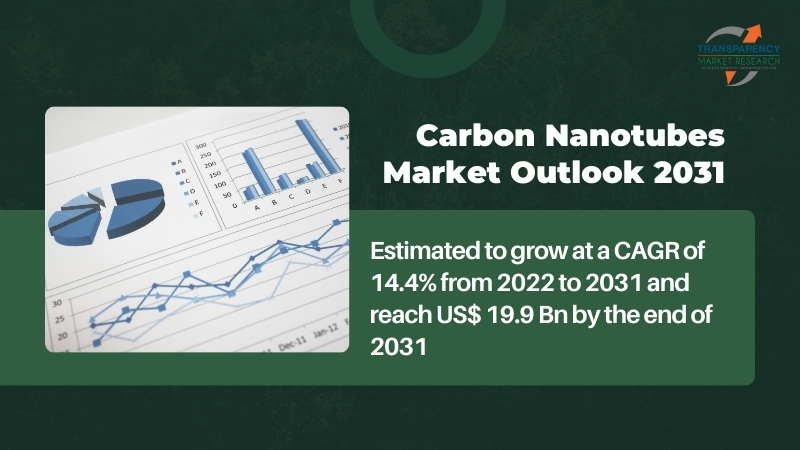
Carbon Nanotubes Market: Competitive Landscape
The carbon nanotubes market presents a competitive landscape shaped by technological advancements and strategic collaborations. Leading players like Nanocyl, Arkema, and Showa Denko dominate with diverse product portfolios and extensive R&D initiatives. Emerging contenders such as OCSiAl and Raymor Industries challenge norms with novel production methods and superior quality offerings.
The market witnesses intensified competition due to the material’s application versatility across electronics, aerospace, and healthcare sectors. Focus on enhancing production efficiency, cost-effectiveness, and exploring new applications drives continuous innovation, reshaping the carbon nanotubes market and fueling the quest for breakthroughs in material science and technology. Some prominent manufacturers are as follows:
- Arkema
- Cabot Corporation
- CHASM
- Cheap Tubes
- Jiangsu Cnano Technology Co.
- Klein Commodities
- LG CHEM
- Nano-c
- Nanocyl SA
- Nanostructured & Amorphous Materials Inc.
Key Findings of the Market Report
- Multi-wall carbon nanotubes lead the market due to their superior mechanical strength, conductivity, and versatility in various industrial applications.
- Electricals & electronics lead the carbon nanotubes market, driven by demand for high-performance materials in cutting-edge technology applications.
- Asia Pacific leads the carbon nanotubes market, driven by robust industrialization, extensive research initiatives, and growing electronics and automotive sectors.
Carbon Nanotubes Market Growth Drivers & Trends
- Rising demand for lightweight, high-performance materials in electronics drives carbon nanotubes’ usage in batteries, displays, and semiconductors.
- Adoption of carbon nanotubes for lightweight composites, enhancing aircraft durability and fuel efficiency.
- Increasing utilization in drug delivery systems, imaging technologies, and tissue engineering for enhanced medical solutions.
- Growing emphasis on eco-friendly materials in construction, automotive, and energy sectors propels the demand for carbon nanotubes.
- Continuous R&D initiatives focused on improving production methods, cost-efficiency, and expanding applications drive market evolution.
Unlock Growth Potential in Your Industry! Download PDF Brochure: https://www.transparencymarketresearch.com/sample/sample.php?flag=S&rep_id=239
Global Carbon Nanotubes Market: Regional Profile
- North America, led by key players like Nanocyl and Hyperion Catalysis International, experiences substantial growth due to extensive research initiatives and robust adoption of nanotechnology. The region’s focus on technological innovation, particularly in electronics and aerospace, drives the demand for carbon nanotubes.
- In Europe, dominated by companies like Arkema and Thomas Swan & Co., stringent environmental regulations promote sustainable applications of carbon nanotubes. This region emphasizes their usage in automotive, construction, and healthcare sectors, encouraging eco-friendly advancements.
- The Asia Pacific region, with major players like Showa Denko and Hanwha Solutions, encounters rapid market growth. Factors such as extensive industrialization, burgeoning electronics market, and government investments in research contribute to the escalating demand for carbon nanotubes across various applications.
Product Portfolio
- Klein Commodities offers a diverse portfolio in the commodities market. Specializing in trading precious metals, energy, and agricultural products, Klein Commodities provides tailored solutions and investment opportunities for client’s worldwide, ensuring reliability and profitability.
- LG CHEM excels in innovative chemical solutions. Their portfolio spans advanced materials, batteries, and electronic components, driving innovation in diverse industries with a focus on sustainability and cutting-edge technology.
- Nano-C pioneers advanced materials for emerging technologies. Their portfolio includes cutting-edge carbon nanotubes and fullerenes, fueling innovations in electronics, energy storage, and biomedical applications, ensuring superior performance and functionality.
Carbon Nanotubes Market: Key Segments
By Product Type
- Single-wall Carbon Nanotubes
- Multi-wall Carbon Nanotubes
By Application
- Polymers
- Energy
- Electricals & Electronics
- Others (Medical, Chemical, Optical Devices, etc.)
By Region
- North America
- Latin America
- Europe
- Asia Pacific
- Middle East & Africa
Buy this Premium Research Report: https://www.transparencymarketresearch.com/checkout.php?rep_id=239<ype=S
Browse More Reports by TMR:
Flat Roofing Market (平屋根市場The industry was valued at US$ 30.9 Bn in 2021. It is estimated to grow at a CAGR of 5.4% from 2022 to 2031 and reach US$ 52.3 Bn by the end of 2031.
PVC Emulsion Market (Markt für PVC-Emulsionen) – The industry was valued at US$ 3.5 Bn in 2021. It is estimated to grow at a CAGR of 4.3% from 2022 to 2031 and reach US$ 5.1 Bn by the end of 2031.
About Transparency Market Research
Transparency Market Research, a global market research company registered at Wilmington, Delaware, United States, provides custom research and consulting services. Our exclusive blend of quantitative forecasting and trends analysis provides forward-looking insights for thousands of decision makers. Our experienced team of Analysts, Researchers, and Consultants use proprietary data sources and various tools & techniques to gather and analyses information.
Our data repository is continuously updated and revised by a team of research experts, so that it always reflects the latest trends and information. With a broad research and analysis capability, Transparency Market Research employs rigorous primary and secondary research techniques in developing distinctive data sets and research material for business reports.
Contact:
Transparency Market Research Inc.
CORPORATE HEADQUARTER DOWNTOWN,
1000 N. West Street,
Suite 1200, Wilmington, Delaware 19801 USA
Tel: +1-518-618-1030
USA – Canada Toll Free: 866-552-3453
Website: https://www.transparencymarketresearch.com
Email: sales@transparencymarketresearch.com
Follow Us: LinkedIn| Twitter| Blog | YouTube

© 2024 Benzinga.com. Benzinga does not provide investment advice. All rights reserved.
Trump Election Raises Odds Of 'Roaring 2020s Scenario,' Veteran Wall Street Investor Says: How High Could US Stock Market Rise?
The U.S. stock market erupted with gains following Donald Trump‘s victory in the 2024 presidential election and a potential Republican sweep of Congress. This sets the stage for what some analysts call a new “Roaring 2020s.”
The S&P 500 — tracked by the SPDR S&P 500 ETF Trust SPY — jumped 2.5% to fresh record highs on Wednesday, marking its best one-day performance in nearly two years and the strongest ever in a post-Election day.
Analysts and investors speculate that Trump’s planned corporate tax cuts and deregulation could fuel a prolonged rally in the stock market.
Notably, small-cap stocks, represented by the iShares Russell 2000 ETF Trust IWM, surged 5.8%, reflecting investor optimism that domestic-focused companies could benefit most from protectionist policies expected under Trump’s administration.
Chart: Small Caps Jump Nearly 6% After Election Day
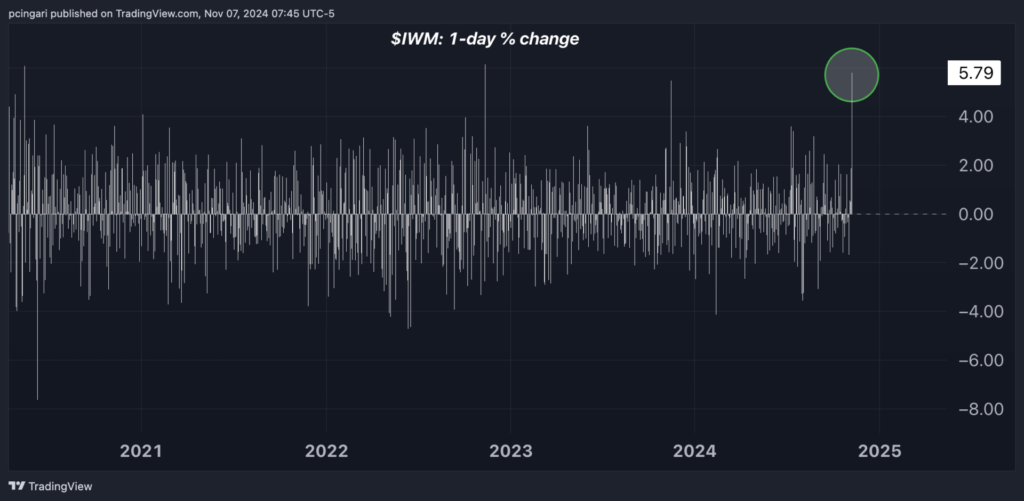
A ‘Roaring 2020s’ Market Rally?
Veteran Wall Street investor Ed Yardeni described this post-election surge as “consistent with a Roaring 2020s scenario.” Yardeni believes that Trump’s policies could increase the odds of robust economic growth, strong corporate earnings, and an extended bull market.
“Stocks soared today on the widespread perception that Trump 2.0 will include a cut in the corporate tax rate and reductions in business regulations,” Yardeni wrote in a note on Thursday.
According to Yardeni, the conditions are shaping up for an economic boom similar to the 1920s — a period of rapid economic growth, technological advancement, and soaring stock prices.
But the economic boom of the 1920s eventually led to a stock market crash in 1929 and the onset of the Great Depression.
Yardeni draws a parallel, quoting Mark Twain: “History doesn’t repeat itself, but it often rhymes.”
The expert assigns a 50% probability to the “Roaring 2020s” scenario, a 20% probability to a “1990s-style stock market meltup,” and a 30% chance of a “1970s-style geopolitical crisis with a possible U.S. debt crisis.”
Yardeni also indicates that he is considering increasing the probability of the Roaring 2020s scenario, given the likelihood of a more business-friendly environment under Trump.
How High Could The S&P 500 Go?
Yardeni has bold projections for the S&P 500 if the “Roaring 2020s” scenario materializes.
He estimates an average annual return of around 11% for the S&P 500, including reinvested dividends.
This forecast sharply contrasts with the one presented by Goldman Sachs last month, where analysts at the investment bank predicted a decade of modest gains for stocks, with the S&P 500 averaging just 3% annually over the next 10 years.
In Yardeni’s view, stocks remain the best hedge against inflation, as companies can often pass on higher costs to consumers.
Under his “Roaring 2020s” scenario, strong productivity growth and stable inflation rates could bolster corporate profits and sustain the market’s upward trajectory.
Yardeni expects the S&P 500 could climb to 8,000 by the end of the decade, driven largely by rising corporate earnings rather than inflated valuation multiples.
Read now:
Market News and Data brought to you by Benzinga APIs
© 2024 Benzinga.com. Benzinga does not provide investment advice. All rights reserved.
Potato Protein Market Size Surges to USD 381.5 Million by 2031 at a 6.9% CAGR, Boosted by Advancements in Plant Protein Production| Analysis by Transparency Market Research, Inc.
Wilmington, Delaware, United States, Transparency Market Research, Inc. , Nov. 07, 2024 (GLOBE NEWSWIRE) — The global potato protein market was projected to attain US$ 209.6 million in 2022. It is anticipated to garner a 6.9% CAGR from 2023 to 2031 and by 2031 the market is likely to attain US$ 381.5 million by 2031.
Leading companies in the market are making significant investments to advance the development of potato extract proteins and enhance the production process. In an effort to produce a fully plant-based product, the industry is moving toward using plant-based stabilizers and emulsifiers because of the growing consumer awareness of food additives and allergies.
Download Sample PDF Copy of the Potato Protein Market Research Summary Now –https://www.transparencymarketresearch.com/sample/sample.php?flag=S&rep_id=36767
As political unrest and climate change disrupt the supply chains for protein resources and threaten food security, plant-based proteins like those found in potatoes will become increasingly important to our future.
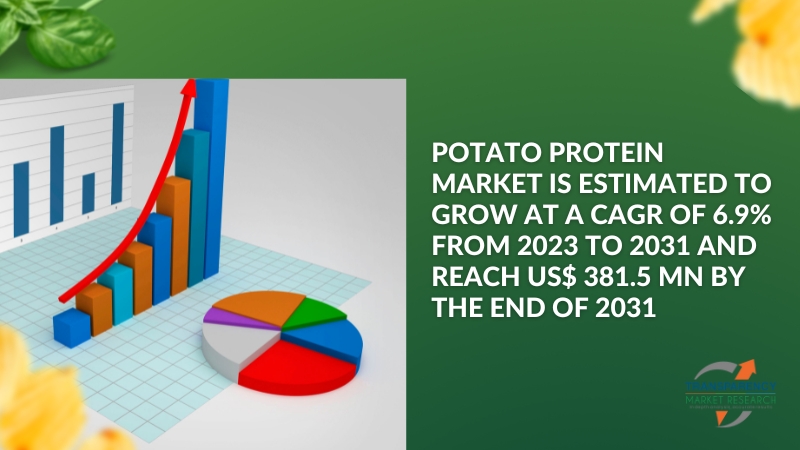
Global Potato Protein Market: Key Players
Prominent producers are concentrating on the ethical and sustainable source of potatoes. This can be attributed to growing concerns over foodstuffs, particularly proteins used in cooking, coming from sources free of animal cruelty and that practice.
To satisfy the growing demand from the profitable vegan food and sports nutrition industries, vendors are also making major investments in the production of potato extract proteins and tuberous crop proteins. The following companies are well-known participants in the global potato protein market:
- Tereos
- Avebe U.A.
- AGRANA Beteiligungs-AG
- Roquette Frères S. A.
- Bioriginal Food and Science Corp.
- Duynie Group
- Kemin Industries Inc.
- Meelunie B.V.
- KMC Kartoffelmelcentralen A.M.B.A
- Lyckeby Starch AB
- AKV Langholt AmbA
- Emsland Group
- Kerry Group
- PPZ SA Niechlów
- PEPEES S.A
Key Findings of the Market Report
- The potato protein market is being driven by an increasing trend toward clean-label products and sustainable dietary alternatives.
- Potato proteins are popular healthy snack substitutes for typical snacks since they are used as components in dairy products, nutritious bars, and meat substitutes.
- The market for potato protein is in line with changing customer preferences, and producers in the food and beverage industry are attempting to include it in a range of snacks.
- Commercial plant protein synthesis is a relatively new development in food technology, and more work has to be done to lower the cost of and increase public accessibility to potato-based proteins.
- Potato protein is becoming more and more popular as a main ingredient in animal feed and nutritious bars, two profitable and well-liked possibilities.
Market Trends for Potato Protein
- The food and beverage sector has to incorporate agents that are used in foaming, emulsification, and gelling. For the technology and food services industries, it is imperative that synthetic versions of these chemicals be replaced. Agents derived from potatoes provide special qualities such improved taste, texture, and product stability.
- The growing awareness of consumers towards food allergies and additives is propelling market growth. Suppliers are moving toward using the adaptable qualities of potato protein in their dairy, bread, and nutritious goods. In addition to fundamental components like plant- or dairy-based proteins, a report published in the Journal of Food Science claims that protein bars contain a sizable quantity of additional tastes and stabilizers.
- Stabilizers and additives made from potato protein are becoming more popular as companies in the food industry work to produce products which are entirely plant-based.
Unlock Growth Potential in Your Industry! Download PDF Brochure: https://www.transparencymarketresearch.com/sample/sample.php?flag=S&rep_id=36767
Global Market for Potato Protein: Regional Outlook
Various reasons are propelling the growth of potato protein throughout the region. These are:
- In 2022, Asia Pacific held the majority of the global market share for potato protein. Market statistics are being driven by greater consumer awareness of food allergies and increased uptake of plant-based protein in the area.
- In the long run, plant-based proteins help populous nations like China and India strengthen their efforts towards food security as they adjust to supply chain disruptions brought on by climate change.
- Europe held a prominent position in the global scene in 2022. Due to the prevalence of potatoes, the continent accounts for the a significant share of the global potato production and consumption.
- A major movement toward veganism and a healthy diet among the younger population, along with better government rules, is expected to promote market growth.
Some key developments by the players in this market are:
- PerfectaSOL, a new line of potato products, was introduced in December 2023 by Avebe, a provider of ingredients based on potatoes located in the Netherlands. This substance can be utilized for confections, alternative dairy, and other culinary items. The innovative product has emulsification, smoothness, neutral white hue, and smoothness.
- The distribution business Brenntag and Avebe announced their partnership in July 2023. As a result, Brenntag would distribute Avebe’s goods, including protein components and potato starch, across Turkey.
Global Potato Protein Market Segmentation
Form
End Use
- Meat Alternatives
- Plant Based Dairy Products
- Nutritional Bars
- Others
Region
- North America
- Latin America
- Western Europe
- Eastern Europe
- South Asia & Pacific
- East Asia
- Middle East & Africa
Discover the untapped potential of the Potato Protein Market! Unlock valuable information about each segment. Place your order now- https://www.transparencymarketresearch.com/checkout.php?rep_id=36767<ype=S
More Trending Report by Transparency Market Research:
- Probiotics Market – The global probiotics market is estimated to flourish at a CAGR of 8.0% from 2023 to 2031.
- Curcumin Market – The global curcumin market was estimated at US$ 362.0 million in 2022. A CAGR of 6.7% is anticipated from 2023 to 2031, resulting in US$ 608.2 million in 2031.
About Transparency Market Research
Transparency Market Research, a global market research company registered at Wilmington, Delaware, United States, provides custom research and consulting services. Our exclusive blend of quantitative forecasting and trends analysis provides forward-looking insights for thousands of decision makers. Our experienced team of Analysts, Researchers, and Consultants use proprietary data sources and various tools & techniques to gather and analyses information.
Our data repository is continuously updated and revised by a team of research experts, so that it always reflects the latest trends and information. With a broad research and analysis capability, Transparency Market Research employs rigorous primary and secondary research techniques in developing distinctive data sets and research material for business reports.
Contact:
Transparency Market Research Inc.
CORPORATE HEADQUARTER DOWNTOWN,
1000 N. West Street,
Suite 1200, Wilmington, Delaware 19801 USA
Tel: +1-518-618-1030
USA – Canada Toll Free: 866-552-3453
Website: https://www.transparencymarketresearch.com
Email: sales@transparencymarketresearch.com
Follow Us: LinkedIn| Twitter| Blog | YouTube

Market News and Data brought to you by Benzinga APIs
© 2024 Benzinga.com. Benzinga does not provide investment advice. All rights reserved.

